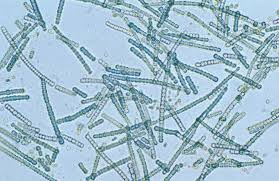BIOLOGICAL CLASSIFICATION TRUE OR FALSE (T or F)
- Three domain system divides the Kingdom Monera into two domains, leaving the remaining eukaryotic kingdoms in the third domain and thereby a six kingdom classification. ___________
- In biological classification- R.H Whittaker (1969) proposed a five kingdom classification on the basis of criteria including cell wall composition , mode of nutrition , reproduction body organisation and phylogenetic. _____________
- Bacteria as a group show the most extensive metabolic diversity.____________
- Bacterial structure is very complex but they are very simple in behaviour. ___________
- Two kingdom system did not distinguish between the eukaryotes and prokaryotes, unicellular and multicellular organisms and photosynthetic and non-photosynthesis organisms.__________
- Heterotrophic bacteria are are helpful in making curd from milk, production of antibiotics, fixing nitrogen in legume roots, etc. _________
- Halophiles are present in the gut of several ruminant animlas such as cows and buffaloes.________
- Archaebacteria differ from other bacteria in having different cell wall structure and this featureis responsible for their survival in extreme condition.__________
- Cyanobacteria are photosynthetic autotrophs. They often from blooms in fresh water bodies._______
- Cyanobacteria have chlorophyll a similar to green plants._______
- Mycoplasma are smallest living cells known and cannot live without oxygen.________
- Diatoms are the “chief producers” in the oceans.__________
- Nastoc and Anabaena play a great role in recycling nurients as they can oxidies nitrate and ammonia._______
- Chrysophytes are planktons and float passively in water current._________
- Euglenoids may behave a heterotroph by predating on other small organisms._______
- Spores of slime moulds posses true walls, they are extremely resistant and are disperesed by air currents._________
- The pigments of Euglenoids are identical to those present in higher plants._________
- Ciliated protozoans have a cavity that opens to the outside of cell surface.__________
- During unfavourable conditions, slims moulds from an aggregation called plasmodium._________
- The morphology and mode of formation of spores and fruiting bodies from the basis for the division of the kingdom in various classes.________
- Marine forms of amoeboid protozoans have silica shells on their surface._______
- Sexual spores, ascospores are exogenously produced and are arranged in fruiting bodies called ascocarps.__________
- Fungi may live as saprophyte, parasite or symbiont._________
- In basidiomycetes, asexual spores are generally not found, but vegetable reproduction by fragmentation is common.___________
- Fungi reproduce asexually by spores called conidia, zoospores or sporangiosproes produced in distinct structures called fruiting bodies.__________
- Some members of deuteromycetes are decomposers while large number of them are parasites.________
- In phycomycetes, asexual reproduction takes place by motile zoospores._________
- Claviceps is used extensively in biochemical and genetic work.__________
- Viruses are cellular organisms and are considered as truly living._________
- Morels and truffles are edible and are considered delicacies.________
- In basidiomycetes, sex organs are absent but plasmogamy is brought about by fusion of two vegetative cells or somatic cells of different strains or genotype.________
- Deuteromycetes are commonly known as imperfect fungi because only the asexual or vegetative phases of these fungi are known.________
- A few members of Kingdom Plantae are partially hetrotrophic, such as venus fly trap and Cuscuta._________
- A single virus contains proteins and genetic materials i.e both DNA and RNA._________
- Diseases like mumps, small pox, herpes and influenza are bacterial diseases._________
- Bacterial viruses or bacteriophages are usually double stranded DNA viruses.________
- Lichens are symbiotic association between algae and fungi. The algal component is known as phycobiont and fungal component as mycobiont.__________
- Viroids are smaller than viruses and are infectious proteinaceous agents._________
- Prions are similar in size to viruses and are abnormally folded proteins._________
- Algae prepare food for fungi and fungi fix atmospheric nitrogen in lichens.__________
ANSWER
1.T, 2.T, 3.T, 4.F, 5.T, 6.T, 7.F, 8.T, 9.F, 10.T, 11.F, 12.T, 13.F, 14.T, 15.T, 16.T, 17.T, 18.T, 19.F, 20.T, 21.T, 22.F, 23.T, 24.T, 25.F, 26.F, 27.T, 28.F, 29.F, 30.T, 31.T, 32.T, 33.F, 34.F, 35.F, 36.T, 37.T, 38.F, 39.T, 40.F
QUOTE:- “ I HAVE FAILED. I’VE JUST FOUND 10,000 WAYS THAT WON’T WORK.”- THOMAS EDISON.


